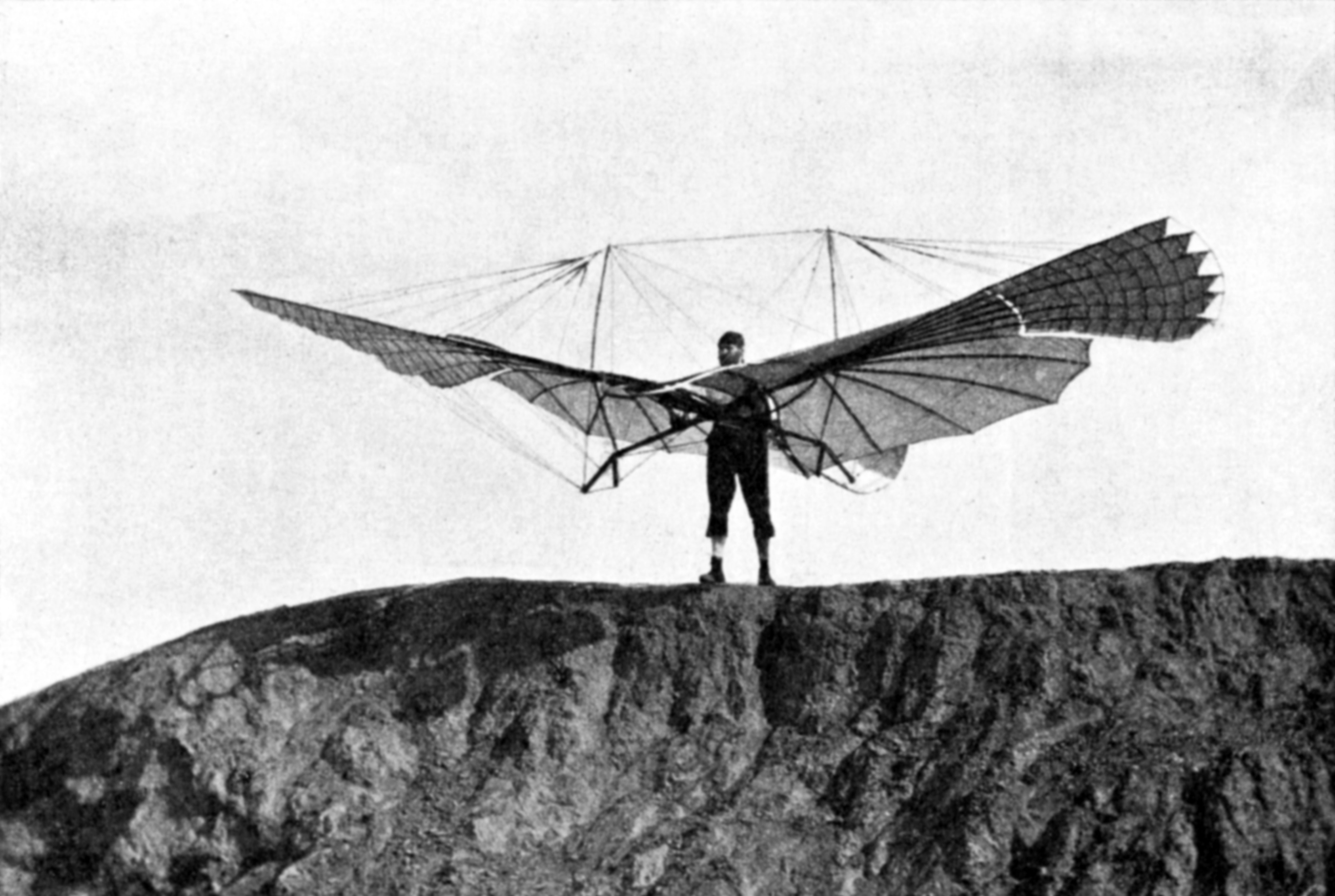Lilienthal, Otto (1848-1896), a German engineer, made the first successful piloted flight in a glider . His pioneering studies of the forces that act on a wing as it moves through the air influenced many early aviators.

Karl Wilhelm Otto Lilienthal was born in Anklam, Germany, on May 23, 1848. He developed an interest in human flight at an early age. When they were teenagers, he and his brother, Gustav, built from birch and feathers a pair of wings that could be strapped to the arms. They had hoped to take to the air by flapping their arms while running down a hill. Their attempt failed, but they continued to design winged vehicles.
In 1870, Lilienthal graduated from the Technical Academy in Berlin (now the Technical University of Berlin) with a degree in mechanical engineering. He then began to study birds, seeking to apply principles of their wing design to a vehicle that would enable a human being to fly. In 1889, Lilienthal wrote Bird Flight as the Basis of Aviation, a book that influenced many early aviators, including Orville and Wilbur Wright (see Wright brothers ).
In 1891, Lilienthal took his first glider flight. He made the vehicle from rods of willow covered with cotton cloth. His first flight, launched from a height of about 3 feet (1 meter), took him only a few feet. Lilienthal increased the height from which he took off, and eventually the glider carried him about 80 feet (24 meters). He steered the glider by shifting his weight. Over the next five years, Lilienthal built 17 more types of gliders and made over 2,000 flights. His longest flight took him about 1,150 feet (350 meters). Lilienthal died on Aug. 10, 1896, after being seriously injured in a glider crash the previous day.
